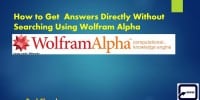Facebook Engagement Rate Vs. Reach: Evaluating Audience Interaction And Content Visibility

In the realm of social media marketing, understanding key metrics such as ‘reach’ and ‘engagement rate’ is crucial for optimizing content visibility and audience interaction, particularly on platforms like Facebook.
Reach, essentially, refers to the total number of unique users who view a specific content, while engagement rate measures the degree of audience interaction with that content. These metrics, though distinct, are intertwined and have a direct impact on a brand’s visibility and resonance with its audience.
This article delves into the comparative analysis of reach and engagement rate, elucidating their significance, and illustrating strategies to augment these metrics effectively. It also incorporates a case study delineating successful implementation of these strategies.
Furthermore, the discourse provides guidance on measuring success and adjusting strategies based on these metrics, thereby offering valuable insights for brands aiming to enhance their Facebook marketing outcomes.
Understanding Key Metrics
To optimize social media strategies, it is crucial to grasp the significance of key metrics. These metrics, such as Facebook engagement rate and reach, illuminate valuable insights about audience interaction and content visibility. They serve as indicators of the effectiveness of the content strategy and the level of audience interest.
The engagement rate is a measure of the level of interaction between the audience and the content. It is represented by likes, comments, shares, or other forms of interaction.
Reach, on the other hand, refers to the total number of unique users who have seen a particular piece of content.
These two metrics, when evaluated together, provide a comprehensive understanding of a brand’s visibility and the audience’s level of interest and interaction.
The Importance of Reach
Understanding the significance of reach is crucial in the digital marketing landscape as it measures the number of unique individuals exposed to a given message or campaign. It is a metric that evaluates content visibility and the potential audience size, thus serving as a preliminary indicator of campaign success.
- Expanded Visibility: High reach signifies a wide audience, enhancing brand awareness and potential consumer base.
- Assessment of Marketing Strategies: By comparing the reach of different campaigns, marketers can assess and refine their strategies for optimal audience engagement.
- Potential for Greater Engagement: Reach provides a foundation for engagement. A higher reach increases the possibility of user interactions, making it a critical step towards achieving a high engagement rate.
The Value of Engagement Rate
In the realm of digital marketing, quantifying the level of interaction between the brand and its audience is of paramount importance. This is where the concept of the engagement rate comes into play. It serves as a critical metric in evaluating the effectiveness of a brand’s social media efforts, specifically on platforms like Facebook.
Engagement rate is a measure of users’ active interaction with the content, including actions like likes, comments, shares, and clicks. This metric provides insights into how much the audience is responding to and interacting with the content, thereby indicating its relative success.
The table below presents a comparison of different aspects of engagement rate and reach:
| Aspect | Engagement Rate | Reach | ||||
|---|---|---|---|---|---|---|
| Definition | Measures user interaction with content | Measures content visibility | ||||
| Importance | Indicates content success | Indicates content distribution | ||||
| Measurement | Likes, comments, shares, clicks | Number of unique users | ||||
| Objective | To increase user interaction | To increase content visibility | ||||
| Impact | Directly affects brand’s online reputation | Broadly affects brand’s online presence | Strategy | Create engaging, relatable content | Share content across multiple platforms |
Comparing Reach and Engagement Rate
Drawing a parallel between these two crucial metrics in digital marketing, it becomes evident that while one focuses on quantifying active user engagement, the other emphasizes the overall dissemination of the brand’s message, each playing a distinct role in shaping an effective social media strategy.
- Reach: This metric provides a count of the total number of unique users who have seen a particular content piece on Facebook. It gives an overview of the content’s visibility and the potential audience size.
- Engagement Rate: This assesses the level of interaction users have with the content. It includes actions such as likes, shares, comments, and clicks, indicating how compelling or relevant the content is to the audience.
- Interplay: Understanding the relationship between reach and engagement rate can help marketers optimize their content for maximum visibility and engagement, thereby enhancing overall campaign effectiveness.
Strategies to Increase Reach and Engagement Rate
In the pursuit of elevating reach and engagement rate on Facebook, two crucial strategies have been identified:
- The creation of engaging content requires an in-depth understanding of the target audience’s preferences, interests, and behaviors.
- The effective utilization of Facebook’s algorithm involves the effective use of Facebook’s algorithm to ensure maximum visibility of content.
By combining these strategies, it is projected that significant improvements in both reach and engagement rate can be achieved.
Creating Engaging Content
Crafting compelling content plays a pivotal role in enhancing both the engagement rate and reach on Facebook. It is essential to create content that resonates with the audience’s interests and preferences, inciting reactions and shares. Utilizing diverse forms of content such as videos, images, and infographics can help to increase audience interaction.
Moreover, incorporating a clear and actionable call-to-action can significantly boost the engagement rate.
Furthermore, the timing and frequency of content posts also contribute to overall reach and engagement. Regular posting ensures consistent visibility, while posting during peak audience activity times increases the likelihood of content engagement.
Ultimately, understanding the audience and tailoring the content to their interests and behaviors is crucial for maximizing both reach and engagement on Facebook.
Utilizing Facebook’s Algorithm
Harnessing the power of the social media giant’s complex algorithm can significantly enhance the efficacy of marketing efforts, by ensuring that the posted material gains optimal exposure among the desired user base. Understanding the factors that the Facebook algorithm prioritizes can be instrumental in constructing a successful marketing strategy. The algorithm assesses the relevance and quality of content using a multitude of parameters, such as engagement rate and user behavior, to ensure posts reach users likely to interact.
| Factor | Explanation | Improvement Strategy | ||||
|---|---|---|---|---|---|---|
| Content Quality | High-quality content is favoured by the algorithm | Create engaging and informative posts | ||||
| User Interaction | The algorithm prioritizes posts from user’s frequent contacts | Encourage audience interaction | ||||
| Relevance | Content must be pertinent to the user’s interests | Research and understand your target audience | ||||
| Timing | Posts are prioritized based on the time of posting | Analyze audience activity to determine timing | Consistency | Regularity in posting and engagement activities | Develop a content calendar and stick to it |
Case Study: Successful Reach and Engagement Rate Strategies
Analyzing successful strategies for increasing reach and engagement rates offers invaluable insights into how businesses can effectively interact with their audience and boost the visibility of their content. A case study that illustrates this involves a global brand that significantly improved its Facebook performance by implementing a comprehensive, data-driven strategy.
Key elements of this successful strategy included:
- Regularly posting engaging content tailored to the interests of the target audience
- Using Facebook’s ad targeting features to reach specific demographic groups
- Actively encouraging user interaction through comments, likes, and shares
- Monitoring analytics to identify the types of content that generate the most engagement
These tactics resulted in a significant increase in both reach and engagement, demonstrating the potential impact of a well-crafted Facebook strategy.
How to Measure Your Success
In the endeavor to gauge the effectiveness of Facebook marketing strategies, the utilization of Facebook’s Analytics Tools presents a substantial resource.
This toolset not only provides a comprehensive overview of engagement rate and reach but also offers valuable insights into user behavior and content effectiveness.
However, the task of interpreting these results is not without its complexities, necessitating a proficient understanding of data analysis to accurately decipher the metrics and convert them into actionable marketing strategies.
Using Facebook’s Analytics Tools
Evaluating audience interaction and content visibility on Facebook necessitates the effective use of the platform’s robust analytics tools.
The two primary tools provided within the platform are Facebook Insights and Facebook Ads Manager.
Facebook Insights, accessible to any page administrator, offers granular data on post reach and engagement, including actions such as likes, shares, and comments. Additionally, the tool provides demographic data about the audience, such as age, gender, and location.
Facebook Ads Manager, on the other hand, focuses on the performance of paid ad campaigns, including metrics such as impressions, click-through rates, and conversions.
Understanding these analytics can assist in optimizing content strategies, improving audience targeting, and ultimately, maximizing engagement and reach.
Interpreting Your Results
Understanding the significance of your social media metrics is a crucial step towards refining your digital marketing efforts and achieving your strategic objectives.
The interpretation of Facebook’s engagement rate and reach offers critical insights into audience interaction and content visibility.
An increase in the engagement rate signifies a strong connection with the audience, whereas a decline may suggest the need for content optimization.
Meanwhile, reach measures the visibility of posts, indicating how many users have encountered your content. A higher reach signals greater content exposure, promoting brand awareness.
However, a balance between engagement and reach is essential. High reach with low engagement may imply less effective content, while high engagement with low reach may indicate a need for improved content distribution strategies.
Adjusting Your Strategy Based on Metrics
Shifting your approach based on key performance indicators, such as Facebook engagement rate and reach, can significantly improve both audience interaction and content visibility. It is crucial to adjust the strategy based on these metrics, as it can provide valuable insights into the effectiveness of the content and audience behavior.
- Firstly, if the engagement rate is low, consider improving content quality, using more engaging formats like videos or polls, or scheduling posts for times when the audience is most active.
- Secondly, if the reach is not satisfactory, it may be necessary to increase the frequency of posts or invest in paid advertisements to boost content visibility.
- Thirdly, continuously monitor these metrics and adjust the strategy accordingly. This dynamic approach can lead to better results and a more engaged audience.
Frequently Asked Questions
What are some common mistakes marketers make when evaluating their Facebook engagement rate and reach?
Common errors in evaluating Facebook engagement rate and reach include neglecting to consider audience demographics, overlooking the impact of content quality, and failing to accurately measure the balance between organic and paid reach.
How does Facebook’s algorithm affect the visibility of my content?
Facebook’s algorithm prioritizes content based on user activity and interactions. Posts with high engagement rates are more likely to appear in user feeds, thus increasing visibility. This includes shares, comments, reactions, and clicks.
Can my business’s industry affect my Facebook engagement rate and reach?
Yes, a business’s industry can influence its Facebook engagement rate and reach. Different industries attract varying demographics, resulting in distinct interaction patterns and content visibility on the social media platform.
How does paid advertising on Facebook influence engagement rate and reach?
Paid advertising on Facebook potentially expands reach and enhances engagement rate by targeting specific demographics, thereby increasing content visibility and interaction. Effectiveness, however, hinges on ad quality and audience relevance.
Are there any tools or software that can help me better analyze my Facebook engagement and reach metrics?
Numerous tools exist to aid in the analysis of Facebook engagement and reach metrics. These include Facebook’s own Insights tool, Hootsuite, Buffer, and Sprout Social, each providing unique data visualization and monitoring capabilities.





